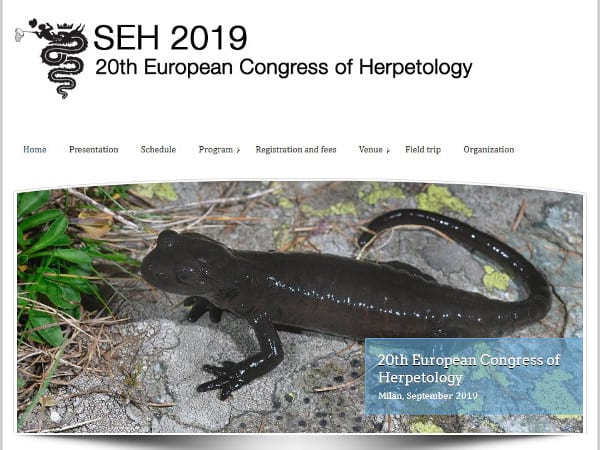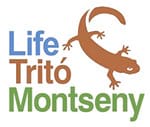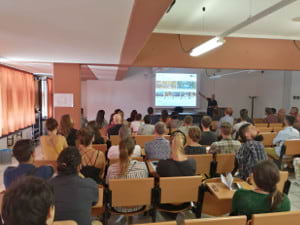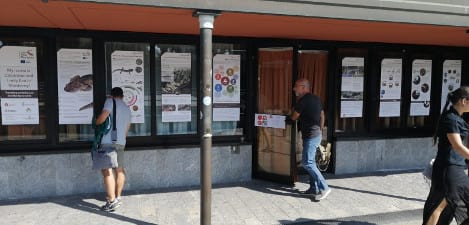Slider 3
Life Tritó Montseny
Un símbol de la natura del Montseny
Subbanner
LIFE15 NAT/ES/000757
Project of conservation of an only species to the world
Breadcrumb
Evolution
Evolution of the project Life Tritó Montseny
Asset Publisher


Life is presented in Milan
09/09/2019 08:19 h.
From 2 to 6 September, the Life project was presented at the 20th Herpetology Congress
Every two years, the European Herpetology Congress of the European Herpetological Society offers an opportunity for scientists, conservationists and politicians from Europe and abroad to meet and discuss current results and trends in the field of herpetology.
This year the 20th edition of the congress was held, which included four plenary conferences, sessions on specific fields of herpetology, special sessions, workshops, the SEH Commendera General Assembly and excursions, as well as a rich social program.
Within the framework of this congress, Daniel Guinart, technical coordinator of Life Tritó Montseny presented the project and the results obtained so far. Daniel Villero, from the Forestry Technology Centre of Catalonia, presented the studies carried out regarding modelling, the necessary basis for future reintroductions of the species.
Daniel Guinart presenting the Life Tritó Montseny project. Photo: XPN file
The exhibition of the project was presented. Photo: XPN file
The European Herpetological Society (EHS) was founded in 1979 and has almost 350 members from most European countries. Members receive the quarterly journal "Amphibia-Reptilia" (indexed to Scopus and Web of Science), which publishes articles in English and includes SEH news. International congresses are organised in different parts of Europe, usually every two years.
The SSH is an international non-governmental member of IUCN, the World Conservation Union. The organization is governed by its statutes and the Council, members are elected at Ordinary General (Business) Meetings. The SEH has three committees. The Conservation Committee deals with herpetofauna conservation throughout Europe and adjacent regions, and its members form the European Reptile and Amphibian Specialist Group of the IUCN Species Survival Commission. The results of the work of the Conservation Committee are published, among others, in Amphibia-Reptilia. The Committee on Cartography is dedicated to the distribution of species. It has published the first atlas of amphibians and reptiles in Europe (1997) and a New Atlas of Amphibians and Reptiles in Europe (2014, NA2RE). The Taxonomic Committee which updates the list of European species. The SEH is using its website to develop a Pan-European Herpetological Network that will announce meetings and bring information to the attention of national herpetologists and herpetological societies throughout Europe and elsewhere in the world.




